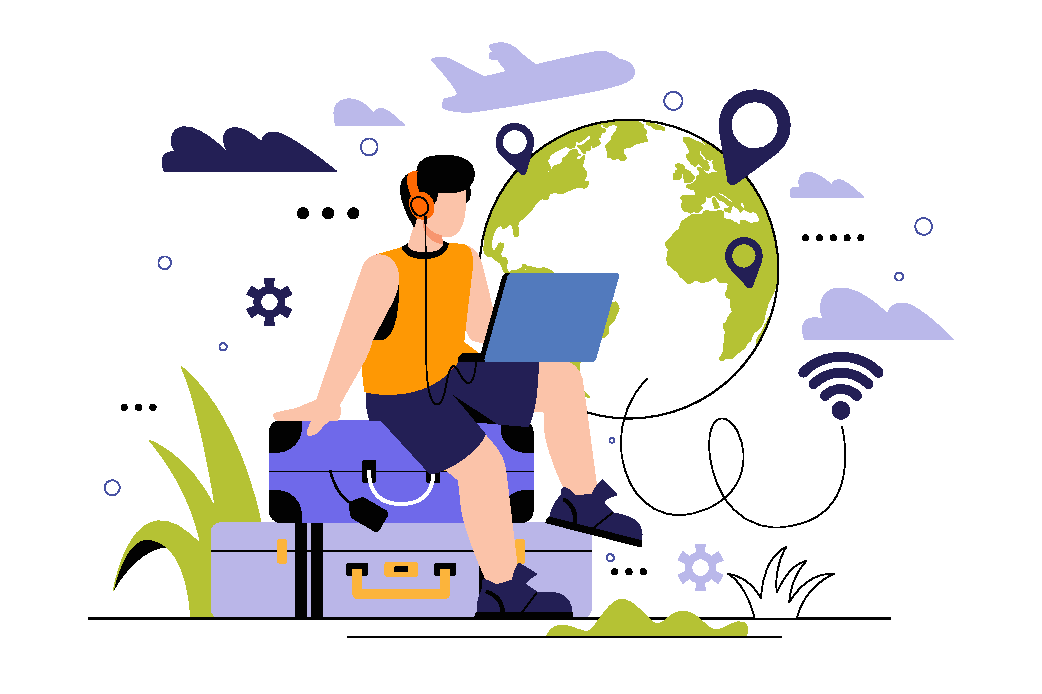For HR leaders, staying ahead of people trends isn’t just about keeping up with what’s new — it’s about anticipating what employees need next. The modern workforce is changing fast, and the most forward-thinking organizations are those adapting their strategies around flexibility, wellbeing, and inclusion.
At LIVD, we see HR leaders redefining what it means to create a workplace where people feel valued, empowered, and connected. Whether you’re leading a growing business or transforming an established culture, these three trends are shaping the next era of work — and offering new opportunities to engage and retain top talent.
1. The Rise of Remote and Flexible Work
The shift toward flexible work isn’t just a reaction to the pandemic — it’s now a defining feature of modern employment. Today’s employees value autonomy, balance, and trust just as much as compensation and career progression.
In fact, research shows that nearly 80% of employees now consider flexible work arrangements a top factor when evaluating job opportunities. For HR leaders, this means flexibility isn’t a “perk” — it’s an expectation.
How HR Leaders Can Build a Flexible Future
Hybrid and remote work models offer a unique opportunity to create environments that prioritize both productivity and wellbeing. But they also require rethinking how teams connect, communicate, and collaborate.
Here’s how HR teams can make it work:
- Redefine productivity. Shift the focus from hours logged to outcomes achieved. Trust employees to manage their time effectively.
- Use technology intentionally. Invest in tools that keep teams connected — but avoid overload. Platforms like Slack, Asana, and Zoom can foster collaboration when paired with clear communication norms.
- Reimagine the office. Create physical spaces that encourage collaboration and creativity while supporting flexible work styles.
- Build culture virtually. Company culture doesn’t have to fade with remote work. Regular recognition, team rituals, and virtual touchpoints help employees stay engaged and connected.
Ultimately, flexible work is about empowerment — giving people the ability to choose how they work best. Companies that embrace this shift will not only attract top talent but also drive higher engagement and loyalty.
2. Prioritizing Employee Wellbeing
Employee wellbeing has evolved from a “nice-to-have” to a business imperative. HR leaders are recognizing that supporting the whole person — not just the employee — is the key to long-term performance and retention.
Wellbeing today goes beyond physical health. It includes mental, emotional, and financial wellbeing — all of which play a critical role in engagement and productivity.
Creating a Culture of Wellbeing
Embedding wellbeing into company culture requires more than offering a wellness program or an app. It’s about designing systems, benefits, and behaviors that show employees their health and happiness matter.
Here’s how leading organizations are doing it:
- Normalize mental health conversations. Encourage openness by training managers to discuss wellbeing with empathy and understanding.
- Offer flexible time off. Mental health days and recharge time help employees avoid burnout and sustain energy over the long term.
- Empower personal choice through lifestyle benefits. Tools like LIVD make it simple for HR leaders to give employees the freedom to choose what wellbeing means to them — whether that’s a gym membership, meditation app, childcare, or a creative hobby.
- Design with balance in mind. Encourage employees to set boundaries, take breaks, and disconnect outside of work hours.
When employees feel supported as humans first, they show up more energized, focused, and loyal. A true culture of wellbeing isn’t just good for people — it’s good for business.
3. Advancing Diversity, Equity, and Inclusion (DEI)
The conversation around diversity, equity, and inclusion has evolved — and employees expect more than promises. They want to see measurable action and lasting cultural change.
A strong DEI strategy is no longer optional; it’s essential for innovation, engagement, and long-term growth. According to McKinsey, organizations with diverse teams outperform their peers by up to 35% in profitability.
Building a More Inclusive Workplace
DEI starts with leadership commitment and extends to every corner of the employee experience — from hiring to development to recognition.
Here’s how HR leaders can make DEI actionable:
- Audit your systems. Review hiring, promotion, and performance evaluation processes for bias and inequity.
- Create safe spaces. Encourage open dialogue where employees can share experiences, ideas, and feedback without fear.
- Invest in inclusive benefits. Support the diverse needs of your workforce — for example, through flexible leave policies, family care options, and lifestyle benefits that adapt to individual circumstances.
- Make diversity measurable. Set clear goals, track progress, and hold leadership accountable for driving equity.
When DEI is integrated into the foundation of company culture — not treated as an initiative — it strengthens trust, collaboration, and innovation across the organization.
Preparing for the Future of Work
The future of work isn’t coming — it’s already here. The most successful HR leaders are the ones who see these trends not as challenges, but as opportunities to humanize the workplace.
Remote and flexible work, employee wellbeing, and inclusive cultures all have one thing in common: they put people at the center of business strategy. And when people feel supported, empowered, and connected, organizations thrive.
At LIVD, we’re helping HR leaders bring this vision to life through personalized lifestyle benefits that elevate the employee experience — because engagement starts with giving employees choice.
As you look ahead, the question isn’t whether these people trends will shape your organization — it’s how you’ll lead through them

